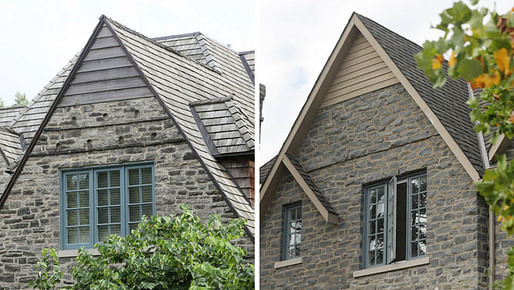

Jason and Jodi Chapnik, who live in a multi-million dollar home on Strathearn Rd., filed a lawsuit against their neighbours for remodeling a nearby property on Vesta Dr. to look “strikingly similar” to their house. — The Star
The couple sued their neighbors for $2.5 million—$1.5 million in damages, $20,000 in statutory copyright damages, $1 million in punitive damages, and a mandatory injunction on the defendant to change the design of the home. The lawsuit was filed against their neighbor Barbara Ann Kirshenblatt, her builder husband and architect brother-in-law for copyright infringement in federal court, as well as the real estate agent who profited from the house’s recent sale and the anonymous contractors who worked on the house.
The plaintiffs argued that the flipped house decreased the value of their home, which is one of the most well-known and admired houses in the neighborhood due to its unique architecture. Kirshenblatt, on the other hand, denies copying the look stating that the renovation is inspired by Tudor stone cottages, a style of stonework that is common to the trade and not protectable by copyright.
The involved homes are located in Toronto's Forest Hill neighborhood, one of the city's most affluent neighborhoods. Though architectural styles range, the area is dominated by Tudor and Georgian styles. In the case made, Jason Chapnik claims that contractors for the property in question approached his home and indicated they "were building a house nearby and were copying aspects of his design." Opposing the claims, the defendants brought to the case comparable differences in the layout and configuration as well as other examples of Tudor-style cottages they claimed inspired the design, including the castle from the James Bond movie Skyfall.
The parties have agreed to settle out of court. Copyright cases between homeowners are quite rare, with disputes more often happening between architectural firms or those within the construction industry. Moreover, the precise extent of protection afforded to works of architecture, which weren't even eligible for copyright until 1990, is not always clear as the line between inspiration and plagiarism is murky territory.
5 Comments
Apparently Canada has no shortages of assholes, either. I wonder what the settlement was ...
hey there.
This is a really ridiculous lawsuit, for one compelling reason. These people are suing, not because the building was copied in any overall way, but because the details were similar. Both of these buildings are traditional houses, and are based on vernacular traditions that go back hundreds of years.
Of course there are many similar details. That's the way traditional architecture works. For them to build a traditional house, and then to expect that no other house which resembles it in some detail should ever be built is really misguided.
A few years back I designed a shingled beach house in a coastal community south of LA. It looked really appropriate in its seaside locale, and pretty soon it was being knocked off all over town. Not identical copies of plan or elevation or massing, but houses similar in character, and sometimes using almost exact copies of eave details, molding profiles, stone base details, etc. Frankly, I'm flattered that people like the house enough to emulate it, and I'd like to think that people being inspired by it has made the neighborhood better.
A curse on both their houses!
The owners who are suing are probably lawyers... fuck 'em. Who else would think about that bullshit. Infuriating.
Block this user
Are you sure you want to block this user and hide all related comments throughout the site?
Archinect
This is your first comment on Archinect. Your comment will be visible once approved.